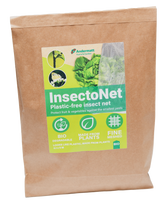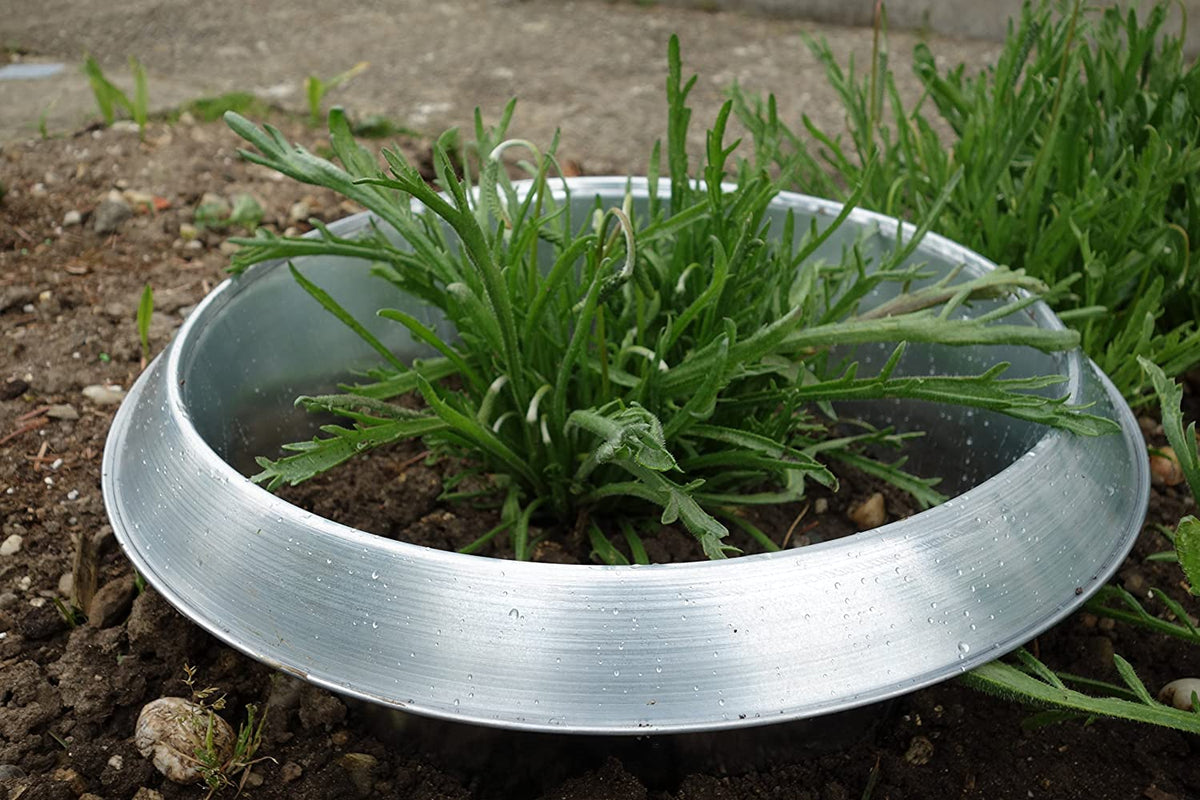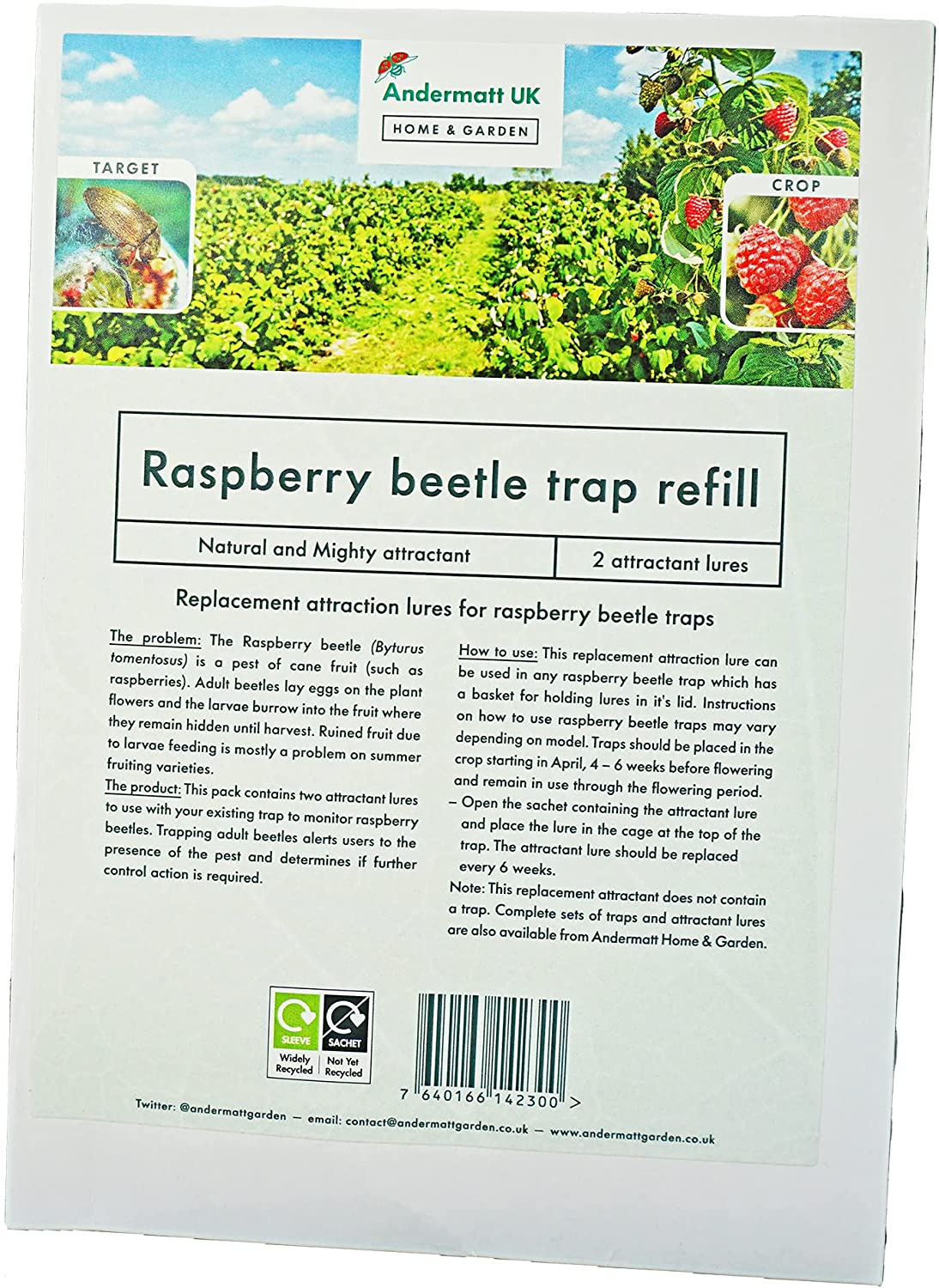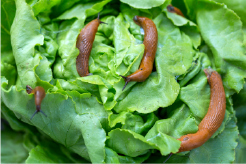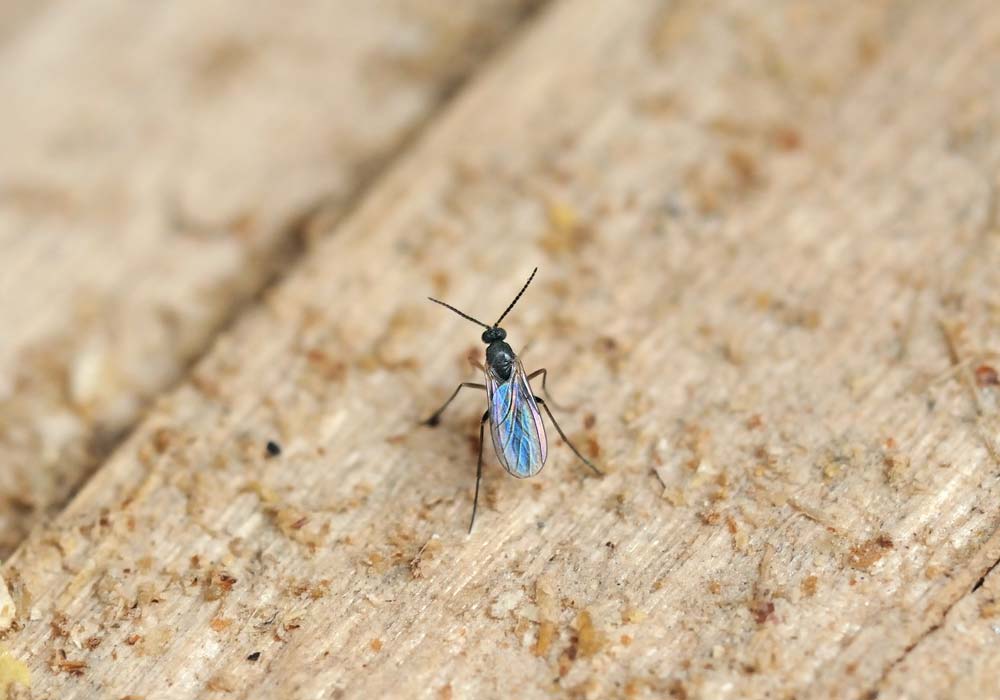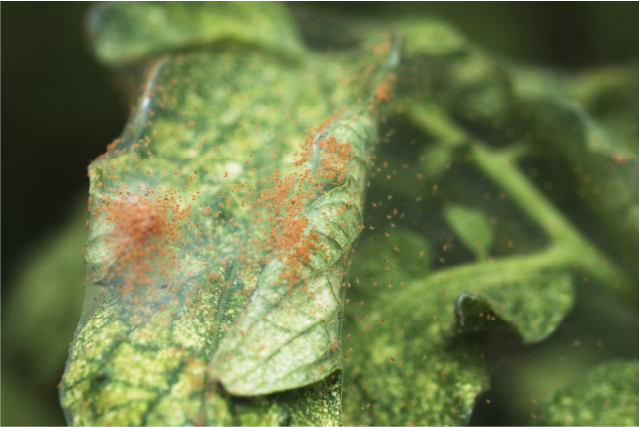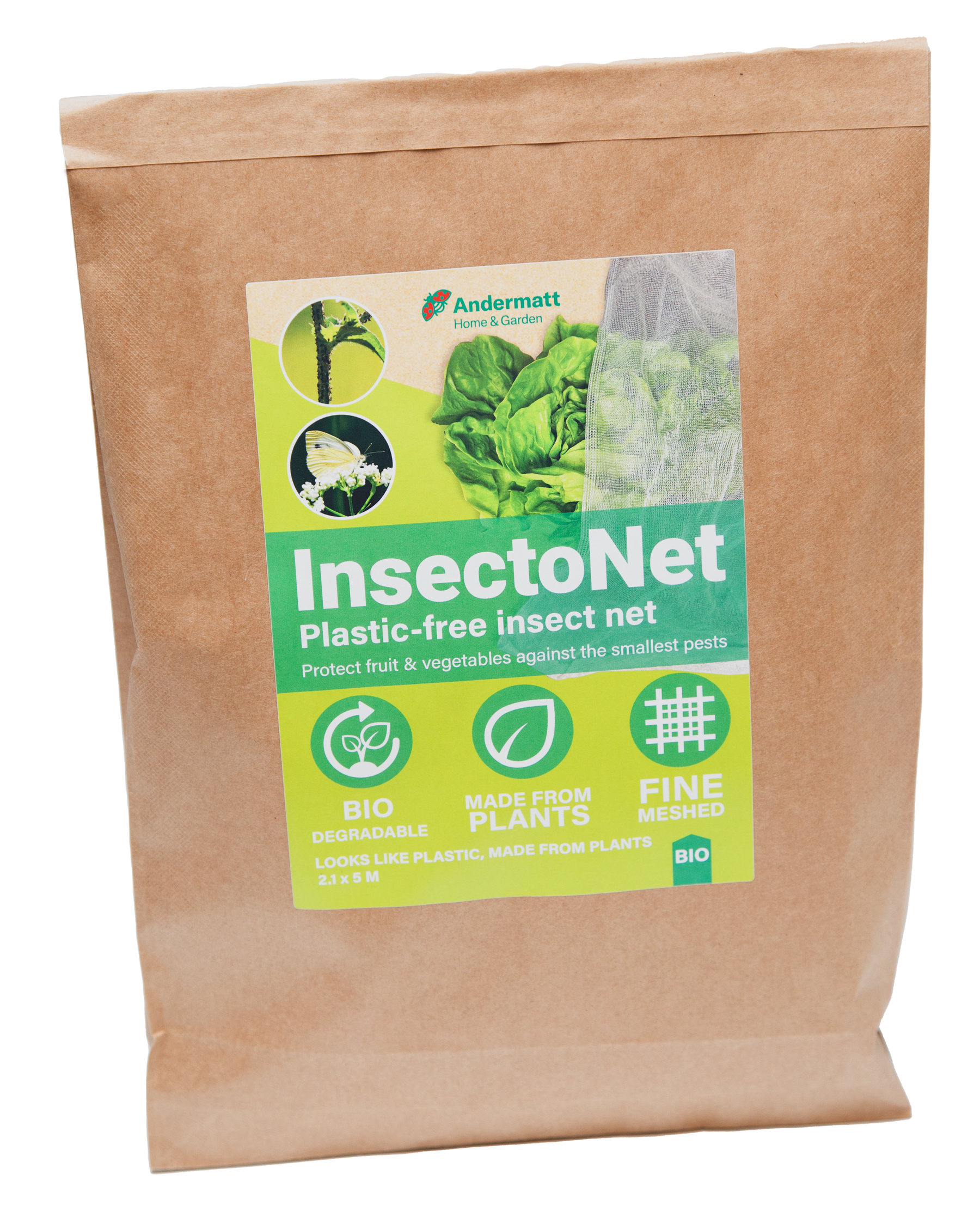
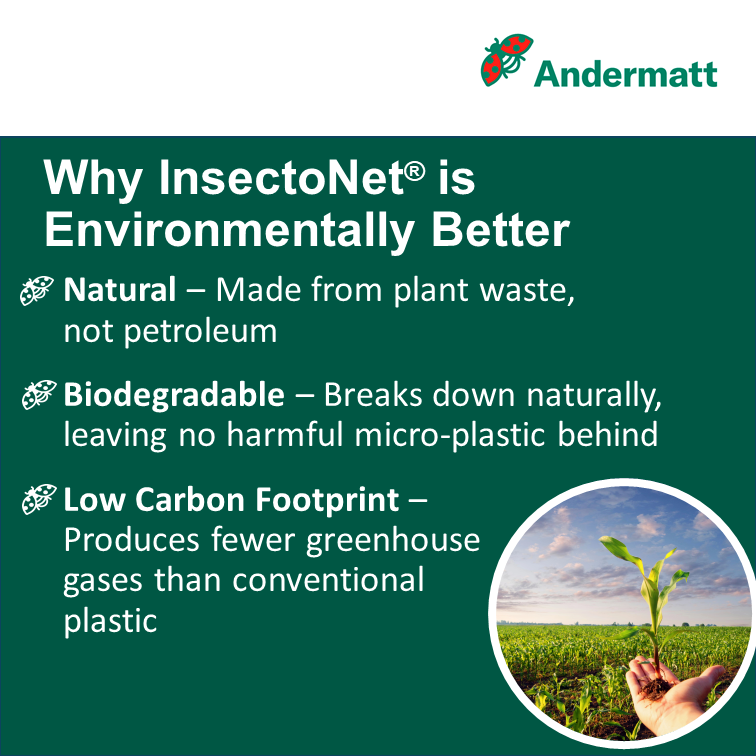
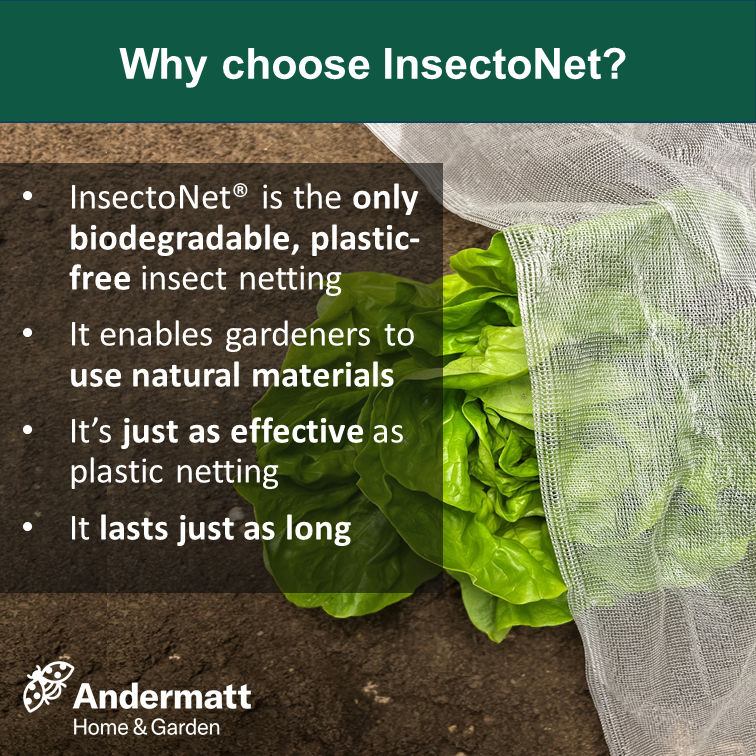

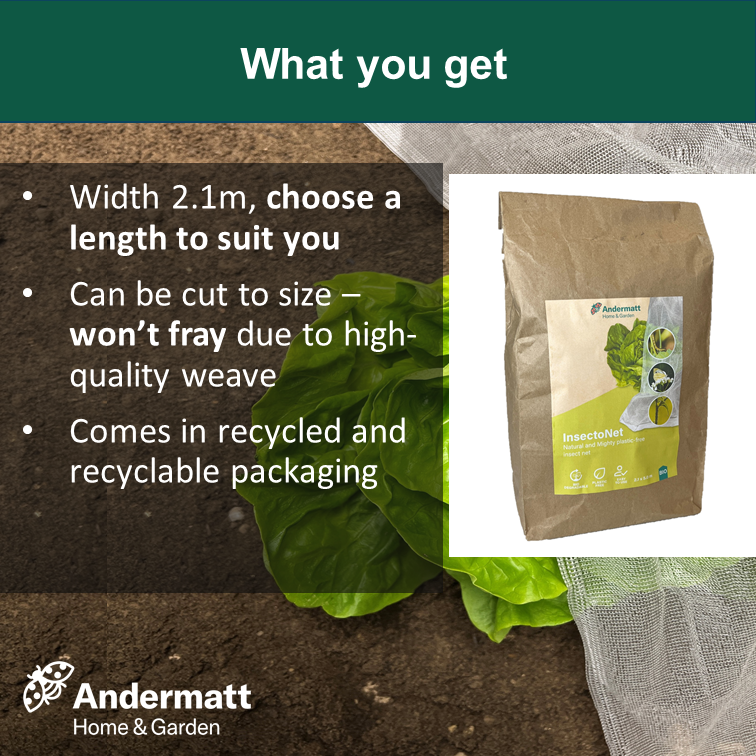
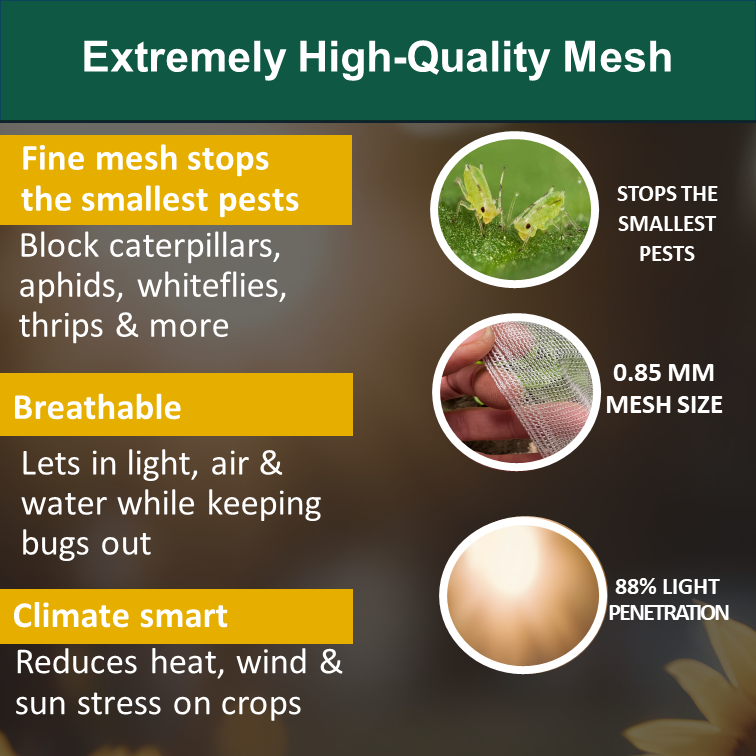
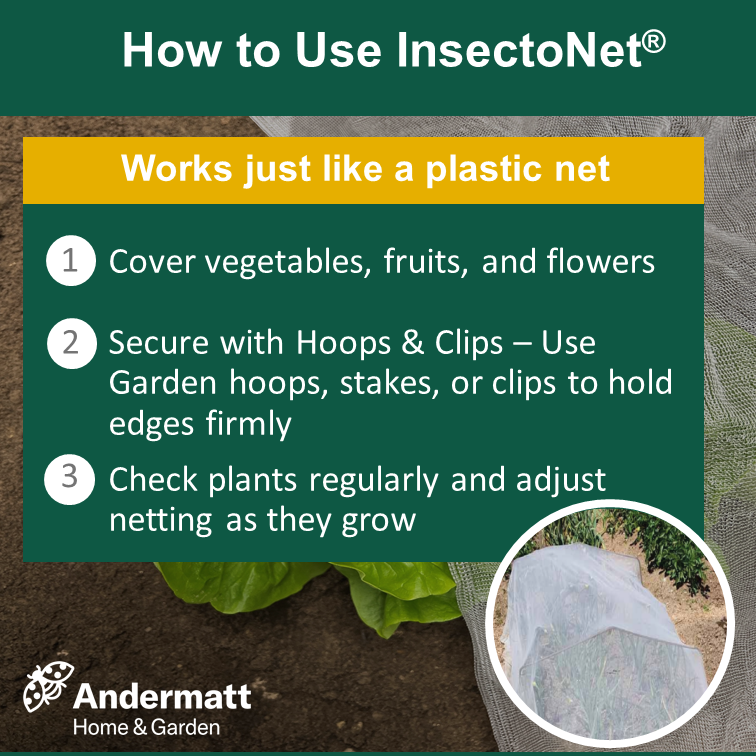
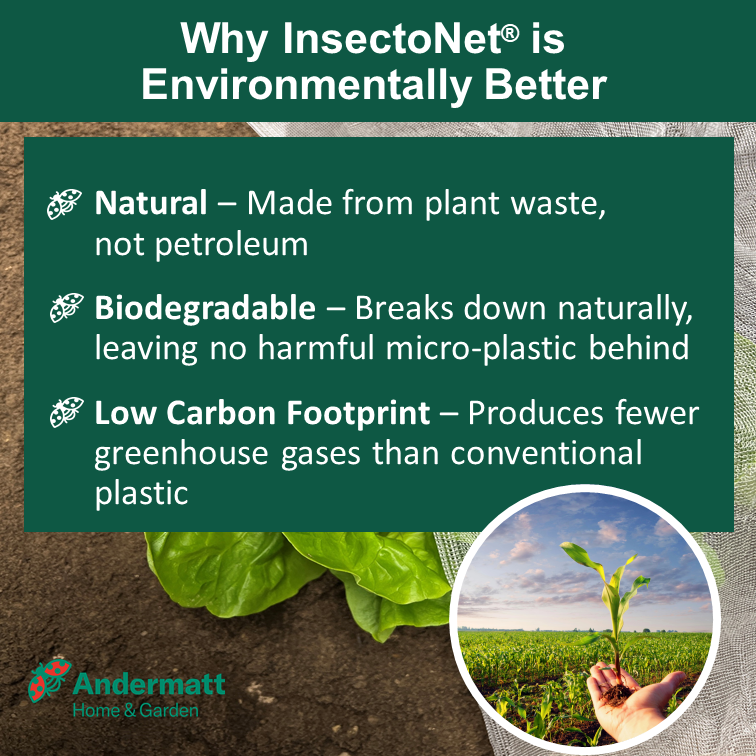
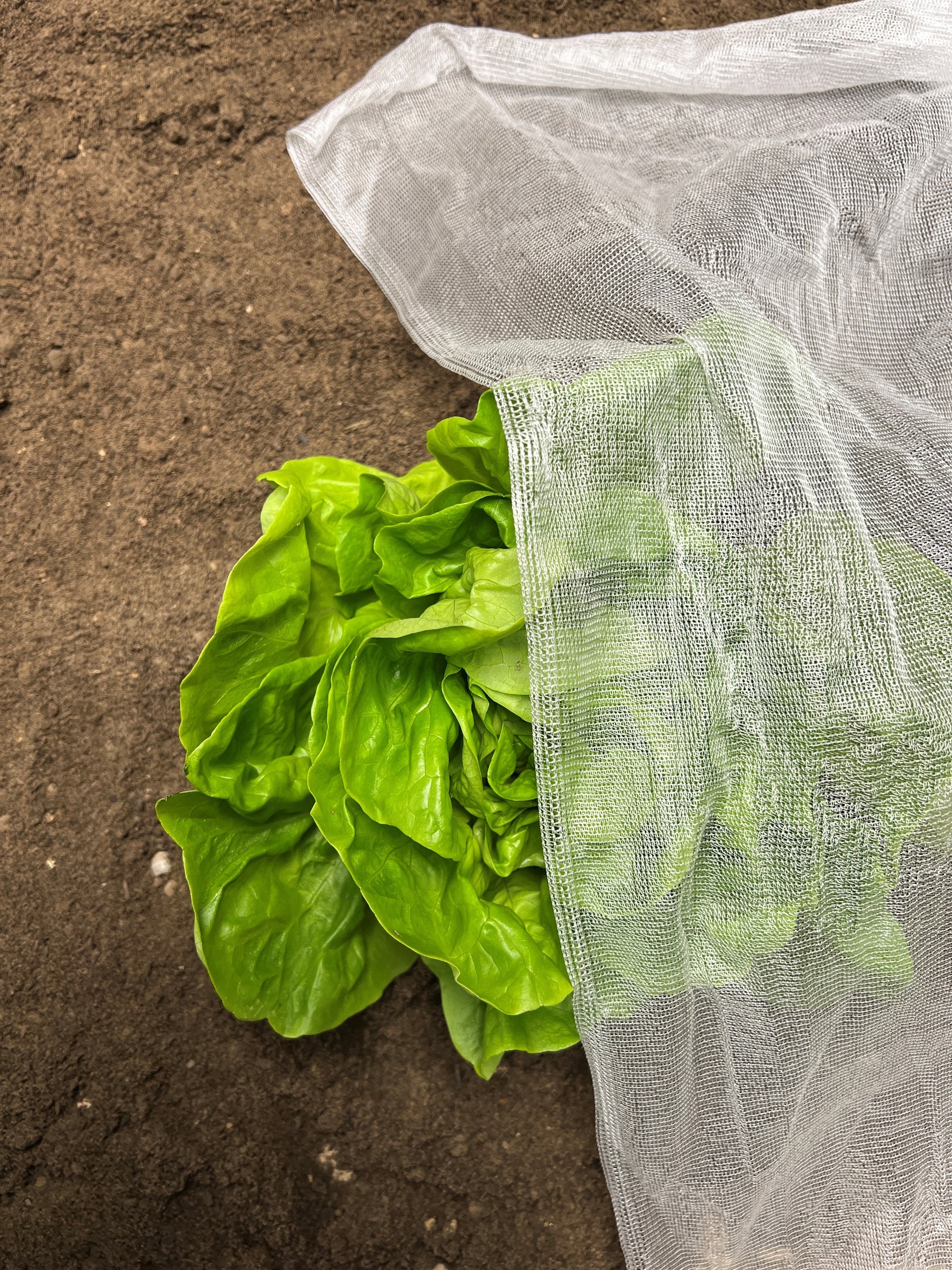
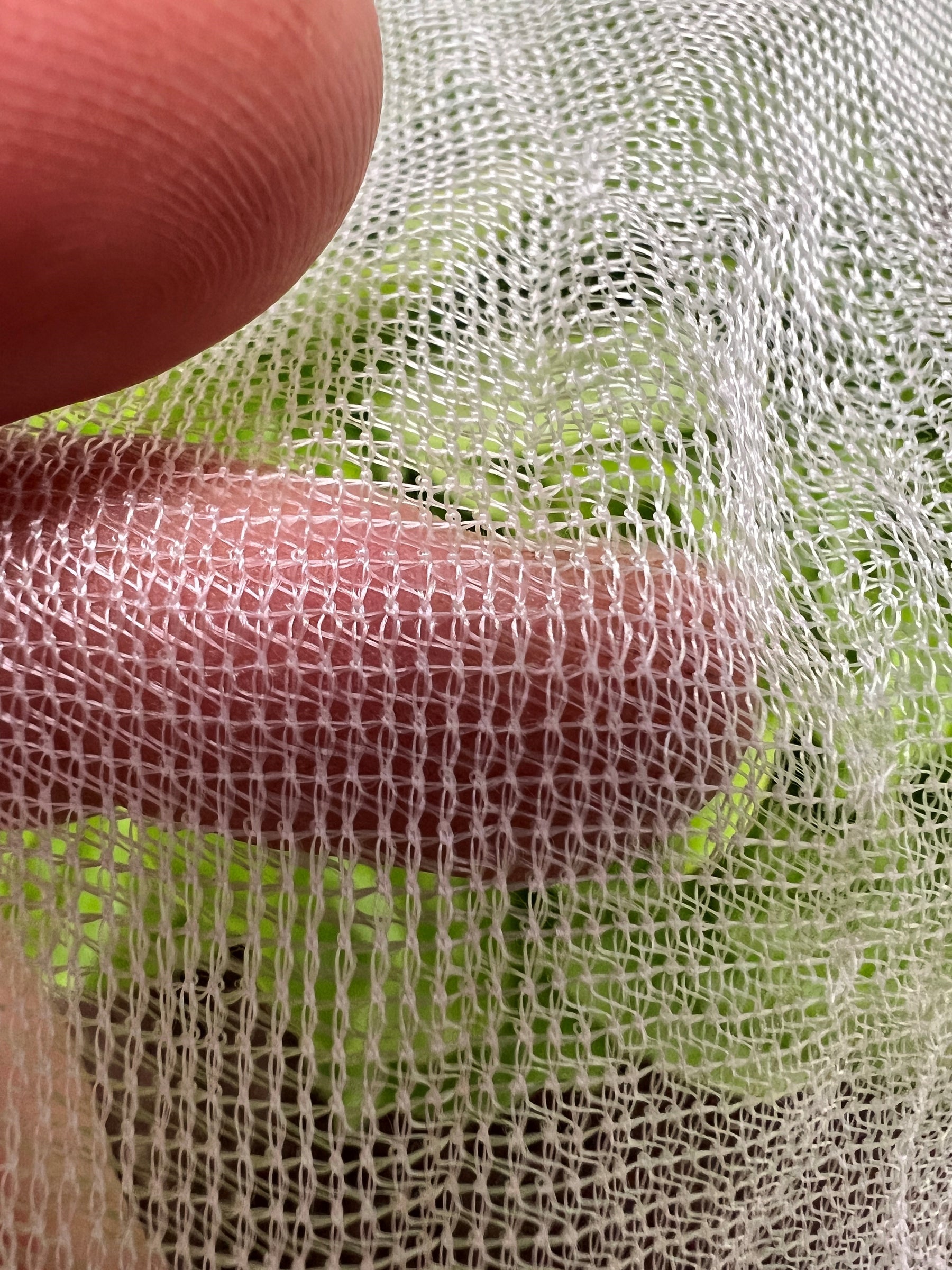


Andermatt Home & Garden
InsectoNet plastic-free insect net
Free shipping on orders £30 and over
Looks like plastic, made from plants. 100% biodegradable insect net.
And just because it’s plastic-free doesn’t mean it’s low quality, either.
- Protects against the smallest pests - very fine 0.85 mm mesh size, including aphids, leafminers, cabbage white butterfly and carrot root fly
- Also protects against mild frosts, heavy rain and wind
- Minimal disruption to light and air – extremely high 88% light penetration and high airflow
- Won’t fray when cut – due to high-quality weaved manufacturing process
- Compostable after use
Because Andermatt Home and Garden are fully committed to sustainability, we’ve made sure it comes in recyclable paper packaging, too.
Arrives as a single large piece of fabric 2.1 wide, in various lengths. It can be easily cut to size.
Traditional plastic nets are made from petroleum. These take hundreds of years to degrade in landfill, are potentially harmful to wildlife once discarded, and leach toxins into the soil. Now gardeners can easily protect their plants without plastic using InsectoNet.
When is best to use?

Apply to plants after planting or sowing up until harvest.
Time of use depends on plant and pest.
Do not use during flowering period for plants which require pollination.
The problem: Flies, butterflies and moths are often attracted to fruit and vegetable plants to lay eggs which hatch into devastating pests. If adults are kept away from plants, they cannot lay eggs. Using a fine net prevents egg laying and therefore the need to control feeding pests.
The product: Finally, you can effectively net your fruit and vegetables without plastic! Biodegradable, this netting is revolutionary. It looks and feels just like a plastic net, but is made from plants.
The fine structure (0.85 mm mesh) protects against a range of pests, including cabbage root fly, carrot fly, onion fly, cabbage white butterfly, pea moth, leek moth, cutworm, thrips, whitefly, leaf miners and many species of aphid (greenfly and blackfly).
- Plastic-free - made from plants
- Biodegradable
- Fine mesh protects against many pests
- High light penetration (88%) ensures growth is unaffected
It lasts for at least 3 years and biodegrades after use.
How to use: After sowing or planting, lay the net over the plants to be protected. Allow for some excess material (approximately 15 cm width) running down the centre of the net. This will be needed for the net to move as the plants grow. Fasten down all four sides of the net with soil, stones or pegs (not included). For plants which require pollination, InsectoNet should be removed during this period to allow pollinators (e.g. bees) access. At the end of the season, dry net and store away from light.
| Store | Not applicable. |
| Shelf life | Not applicable. |
| Use | Product should be setup at time of planting. |
| Important information |
|
| Active substance and content |
Not applicable. |
| Product size |
Packaging size: 23 x 32 x 11 cm. 400g. |
Does insect netting work?
Yes, insect netting creates a physical barrier that is probably the most effective way to keep pest insects away from fruit and vegetable plants, preventing damage. It is an easy, long-lasting, no maintenance method – simply drape over and leave.
What types of insects can InsectoNet protect plants from?
InsectoNet can shield plants from many insects, such as aphids (greenfly and blackfly), pea moth, cabbage white butterfly, cabbage root fly, carrot fly, thrips, whitefly, leek moth, cutworm, onion fly, and leaf miners.
How does insect netting work?
Simply lay over your plants and the holes physically prevent pests getting in. The netting can be secured to the ground so it doesn't blow away by simply putting soil or stones on top, or pegs. Some use hoops to create a structure.
What is InsectoNet’s mesh size?
InsectoNet has a mesh size of 850µm (0.85mm). This small hole size effectively protects plants from various insect pests, even the smallest ones, including butterflies, whiteflies, and aphids.
Why is the mesh size of insect netting important?
The mesh size determines the size of the holes in the netting, affecting which insects it can block. Smaller holes mean the net can protect against smaller insects. InsectoNet’s 850µm (0.85mm) mesh is effective against even the tiny pests. Larger-meshed netting offers less protection.
Does garden netting block sunlight?
Insect nets differ in their light transmission. InsectoNet has been engineered to minimize light blockage, ensuring plant growth is not hindered. Tests show it allows 88% of light to pass through, which is incredibly high.
Will laying insect netting on top of plants damage them?
InsectoNet is designed to be extremely light, just 34 grams per square meter, so that it can lay directly on plants without causing damage. This also allows plants to lift the netting as they grow, provided there is enough slack for movement.
How do you water plants under insect netting?
Simply gently water through the net, or lift the netting and water underneath. Water will pass through the fine holes to the soil. Just avoid heavy watering to prevent the net from potentially being pressed into the soil and creating puddles.
Can I cut insect netting to size?
Yes, its high-quality weave ensures the edges won’t fray or unravel when cut. Simply cut with scissors.
Does insect netting affect pollination?
All insect netting blocks bees. For crops that need insect pollination, like strawberries, raspberries, and blueberries, remove the netting during flowering to allow pollination.
What can you grow under insect netting?
You can grow any plant under insect netting. InsectoNet is designed to block pests while allowing sunlight and water to reach the plants, ensuring healthy growth.
Is netting necessary for vegetables?
While not absolutely necessary, insect netting is highly effective for protecting fruit and vegetable plants from various harmful insects. Once pests get a hold of your fruits and vegetables, they often get decimated very quickly, ruining your crop. Netting is obviously best used as a prevention method, putting on before the pests get on your plants and lay lots of tiny eggs.
What is insect netting made of?
Most nets are made of plastic, but InsectoNet is made of Bioplastic. Bioplastic looks like plastic but is actually made from plants, rather than typical plastic which is made from petroleum. Common plant sources for bioplastic include corn and sugar beet. InsectoNet, made from corn starch-based polylactic acid (PLA), offers the same benefits as plastic netting without the environmental impact of petroleum-based products.
Is InsectoNet biodegradable?
Yes and to a very high standard - EN13432. Whilst many products claim to be biodegradable, look for the EN13432 standard if you want to be sure of the quality. This standard means the product has been fully tested for biodegradability, including timeframes. InsectoNet is classified as biodegradable according to EN13432, demonstrating Andermatt’s commitment to sustainable gardening and environmental conservation.
Biodegradable materials decompose into their original forms of water, carbon dioxide, and biomass through microbial activity.
You may also like
FAQ
about the product

Easy to use




